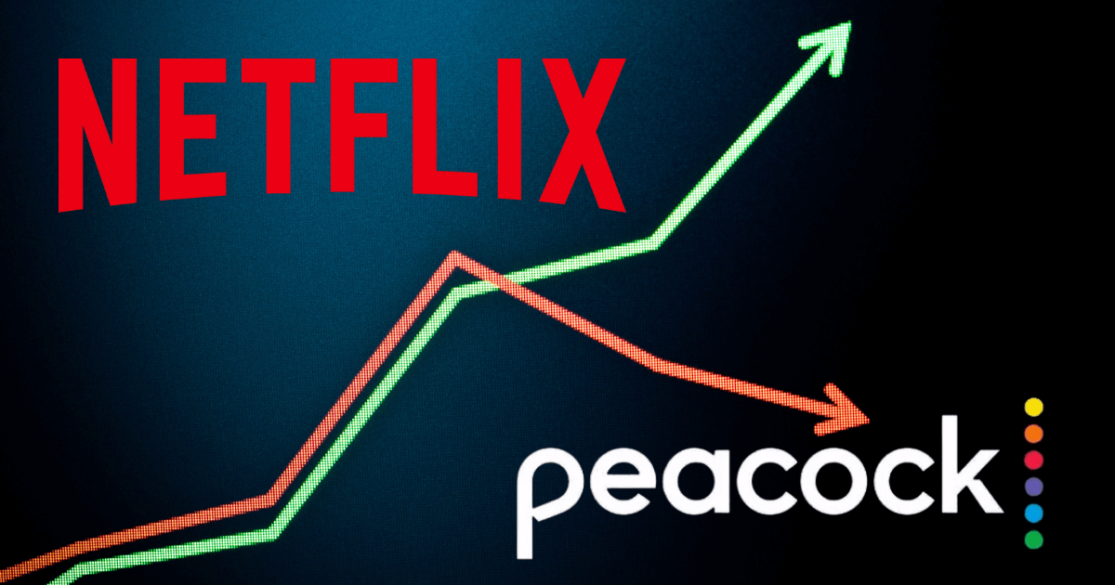Streamers Face Revenue Losses, Hike Prices for Viewers

Netflix announced it would end its platform’s $9.99 Basic ad-free tier, one day after NBCUniversal’s streaming service, Peacock, also announced a price hike. While price hikes aren’t uncommon, Netflix and Peacock also removed the cheapest plan options.
With the price change, Netflix removed its $9.99 ad-free plan—viewers who want an ad-free Netflix experience will now have to shell out $15.49 per month. However, the company still offers a $6.99 standard plan with ads. In fact, Netflix has been pushing its Basic with Ads plan since it launched in November 2022 because it generates higher customer revenue.
Looking for the hottest entertainment?
Subscribe to our email newsletter to get the latest TV premieres, entertaining takes, and money-saving promotions.
By signing up, you agree to our Privacy Policy & Terms and Conditions.
The changes at Peacock are less drastic and amount to $1-2 more monthly for the premium subscription (with ads) and the premium plus (ad-free) price plan. The company did remove its free tier earlier this year, though. Current subscribers will pay the increased price after one month, while new subscribers will face the increased costs.
While Peacock has increased its subscribers over the years, it still faces losses due to programming costs.
Streaming losses are a sticking point in guild negotiations
The price hikes come as streamers continue to face revenue losses. In fact, the five biggest streaming services (not including Amazon Prime Video, Apple TV+, and Hulu) reported over $2 billion in revenue losses in the last quarter. (Warner Bros. Discovery did not report streaming losses for Max in Q1 2023, so we are using Q4 2022 numbers.)
The streaming losses are a big reason the studios are fighting against the WGA and SAG-AFTRA in contract negotiations. Studios say that streaming isn’t stable (since it’s primarily operating at a loss), and therefore the studios cannot pay writers and actors a livable wage.
However, the studios and conglomerates themselves frequently operate in the green. For example, Warner Bros. Discovery (and its previous iterations) operated annually with positive income for the first two years of HBO Max. Likewise, the company’s only annual income loss before the merger with Discovery was in 2017.
By constantly raising prices, the studios and streaming services can make more money off viewers who have cut the cord. But streaming losses and price hikes don’t just impact viewers, they impact the creators of the shows and movies we all love to watch.
Price hikes hit viewers’ wallets
Streaming price hikes will hurt viewers’ wallets, and this recent increase raises the monthly cost for the eight major streaming services by 8.5% for ad-free viewing. Will viewers want to stay with Netflix now that it costs $5.50 more monthly for ad-free streaming?
Netflix announced its quarter two earnings on Wednesday, July 19, and it turns out that after the crackdown on password-sharing, the company added 5.9 million subscribers. The new numbers put Netflix at a global total of 238.39 million subscribers—outpacing Disney+ (157.8 million subscribers) and Max/Discovery+ (97.6 million).
The company did miss its revenue expectations by $100 million, but it expects paid sharing and ad-supported plans to grow revenue through the year. Also, in its investor letter, Netflix predicts that the strike will lead to lower content costs and an increase in revenue and cash flow for the company overall.
But will viewers leave the service if there isn’t new content? Netflix boasts it will have “more returning seasons than any other streamer” this year, but will the content boom last through the strike?
The streamers and studios will continue announcing subscriber numbers and revenue over the next three weeks, and we’ll have a better idea of if viewers are leaving streaming services or transitioning to plans with ads to save money.

